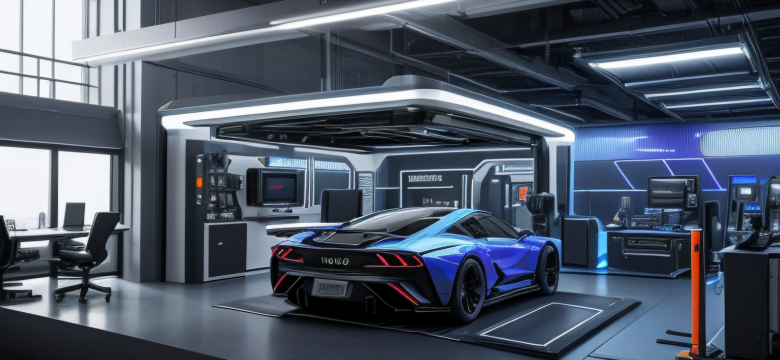In a world that often feels stuck in its ways, today’s innovations are like a breath of fresh air, tackling age-old problems with flair and creativity. Have you ever wondered how we can feed a growing population without exhausting our planet’s resources? Well, innovations in agriculture are stepping up to the plate! Techniques like precision farming and vertical gardens are not just buzzwords; they are revolutionising the way we produce food. By utilising technology to monitor crops and optimise yields, farmers are minimising their environmental impact while ensuring that future generations have enough to eat.
But it’s not just agriculture that’s getting a makeover. The healthcare sector is also undergoing a transformation, thanks to telemedicine and AI diagnostics. Imagine being able to consult a doctor from the comfort of your home! This is becoming a reality, making healthcare more accessible and accurate, leading to improved outcomes for patients everywhere.
Moreover, advancements in renewable energy are paving the way for a sustainable future. With solar and wind power, we are reducing our reliance on fossil fuels and tackling climate change head-on. It’s like switching from a gas-guzzling car to a sleek electric vehicle—better for the environment and our wallets!
All these innovations are interconnected, shaping a world that is not only more efficient but also more livable. So, as we dive deeper into this article, keep an eye out for how these creative solutions are addressing the challenges that have plagued humanity for centuries!
Revolutionising Agriculture
In today’s fast-paced world, agriculture is undergoing a remarkable transformation, thanks to cutting-edge innovations. Techniques like precision farming are not just buzzwords; they are changing the way we cultivate our food. Imagine a farmer using satellite imagery and data analytics to monitor crop health in real-time. This technology allows for targeted interventions, reducing waste and maximising yield. It’s like having a personal trainer for crops!
Moreover, the rise of vertical gardens is a game-changer for urban areas where space is at a premium. These innovative structures allow for the cultivation of fresh produce in confined spaces, bringing the farm to the city. This not only enhances food security but also reduces transportation emissions, making our food systems more sustainable.
As we delve deeper into these advancements, it’s essential to recognise their impact on the environment. By adopting sustainable practices, such as crop rotation and organic farming, we can ensure that future generations inherit a planet that is not only capable of feeding its inhabitants but doing so without depleting its resources.
In summary, the integration of technology in agriculture is not merely a trend; it’s a necessity. The innovations we embrace today will pave the way for a more sustainable and efficient food production system, ensuring that we can meet the demands of an ever-growing population.
Transforming Healthcare
The healthcare landscape is undergoing a remarkable transformation, driven by innovations that are reshaping how we approach patient care. Imagine being able to consult a doctor without leaving your home; that’s the power of telemedicine. This technology not only enhances accessibility but also allows healthcare providers to reach patients in remote areas, breaking down geographical barriers. It’s like having a doctor in your pocket, ready to assist whenever needed!
Moreover, the integration of artificial intelligence (AI) into diagnostics is revolutionising the accuracy of medical assessments. AI algorithms can analyse vast amounts of data in seconds, identifying patterns that even the most experienced professionals might miss. This leads to quicker diagnoses and tailored treatment plans, making healthcare not just reactive but also proactive. Can you imagine a world where diseases are caught before they escalate? Well, that future is closer than we think!
Furthermore, these advancements are not just about technology; they also focus on improving the overall patient experience. With user-friendly platforms, patients can easily access their medical records, schedule appointments, and communicate with healthcare providers. This shift towards patient-centred care is essential, as it empowers individuals to take charge of their health journey.
In summary, the transformation in healthcare is a blend of technology and compassion, aiming to create a system that is more efficient, accessible, and personalised. As we embrace these innovations, we move closer to a healthier future for everyone.
Advancements in Renewable Energy
In today’s world, the shift towards renewable energy is not just a trend; it’s a necessity. With the increasing urgency to combat climate change, innovations in renewable energy are proving to be game-changers. Technologies like solar panels and wind turbines are now more efficient than ever, harnessing nature’s power to provide clean energy for our homes and businesses. Imagine a world where energy comes from the sun and wind rather than fossil fuels—it’s not just a dream anymore!
One of the most exciting developments in this field is the improvement in energy storage systems. Batteries that can store solar energy for use at night or during cloudy days are becoming increasingly viable. This means we can rely on renewable sources even when the sun isn’t shining or the wind isn’t blowing. It’s like having a backup generator that runs on sunshine!
Moreover, advancements in smart grid technology are revolutionising how we consume energy. These grids can efficiently distribute energy where it’s needed most, reducing waste and ensuring a stable supply. The integration of these technologies is paving the way for a future where our energy systems are not only sustainable but also resilient against disruptions.
As we continue to embrace these innovations, it’s clear that renewable energy is not just a solution but a pathway to a cleaner, greener planet. The future is bright, and it’s powered by the sun and the wind!
Smart Urban Planning
Imagine stepping into a city where everything is seamlessly connected, where your morning commute is a breeze, and green spaces are just a stone’s throw away. is not just a buzzword; it’s a transformative approach that is reshaping how we live, work, and play. By integrating technology into the very fabric of our cities, planners are creating environments that are not only efficient but also livable.
At the heart of this revolution are innovative solutions such as smart traffic management systems, which use real-time data to optimise traffic flow and reduce congestion. This means fewer hours stuck in traffic and more time for what truly matters. Moreover, sustainable transport systems, including electric buses and bike-sharing schemes, are making it easier for residents to choose eco-friendly options, significantly cutting down on pollution.
Furthermore, smart cities utilise IoT (Internet of Things) devices to monitor everything from energy consumption to waste management. For instance, sensors can detect when bins are full, ensuring timely collection and reducing litter. This not only keeps our streets clean but also fosters a sense of community pride. As we embrace these changes, we are not just building cities; we are crafting a better future for generations to come.
Educational Technology Breakthroughs
In today’s fast-paced world, educational technology is not just a trend; it’s a revolution. Imagine a classroom where the walls are invisible, and learning knows no bounds. With innovations like online platforms and interactive tools, education has become more accessible than ever before. No longer confined to a single location, students can now dive into a sea of knowledge from the comfort of their homes or anywhere with an internet connection.
One of the most exciting aspects of EdTech is its ability to cater to individual learning styles. Traditional methods often leave some students behind, but with personalised learning experiences, every learner can progress at their own pace. This is akin to having a personal tutor available 24/7, guiding you through complex subjects and ensuring you grasp every concept.
Furthermore, the integration of virtual reality (VR) and augmented reality (AR) is transforming the way we perceive education. Picture studying ancient civilisations by walking through a reconstructed city or exploring the human body in 3D. These immersive experiences not only make learning more engaging but also enhance retention by making lessons memorable.
As we look to the future, the potential for EdTech is limitless. With ongoing advancements, we are paving the way for a more inclusive and effective educational landscape, where every student has the opportunity to shine. Isn’t it exciting to think about what the next breakthrough might be?
Addressing Water Scarcity
Water scarcity is a pressing issue that affects millions globally, but fortunately, innovative solutions are emerging to combat this challenge. Techniques such as desalination and rainwater harvesting are at the forefront of this battle, transforming how we access and manage our most vital resource. Imagine turning salty ocean water into fresh drinking water; that’s exactly what desalination plants do, making it possible to provide clean water even in the driest regions.
Moreover, rainwater harvesting systems collect and store rainwater, allowing communities to utilise this natural resource effectively. These methods not only ensure a more reliable water supply but also promote sustainability. For instance, many urban areas are now incorporating green roofs and permeable pavements to maximise rainwater absorption, reducing runoff and replenishing groundwater supplies.
To illustrate the impact of these innovations, consider the following table showcasing the benefits of desalination and rainwater harvesting:
| Method | Benefits |
|---|---|
| Desalination |
|
| Rainwater Harvesting |
|
In conclusion, by embracing these innovative water management techniques, we can tackle the issue of water scarcity head-on, ensuring that communities worldwide have access to clean, safe water for generations to come.
Frequently Asked Questions
- What are some innovations in agriculture that are making a difference?
Innovations like precision farming and vertical gardens are revolutionising agriculture. They help farmers maximise crop yields while reducing environmental impact, ensuring we can feed future generations sustainably.
- How is technology improving healthcare accessibility?
Technologies such as telemedicine and AI diagnostics are game-changers. They enable patients to access healthcare services from the comfort of their homes, making it easier for everyone to get the care they need.
- What role do renewable energy sources play in combating climate change?
Renewable energy sources like solar and wind power provide clean alternatives to fossil fuels, significantly reducing our carbon footprints and helping to tackle climate change effectively.
- What are smart cities and how do they improve urban living?
Smart cities utilise technology to enhance urban planning, making cities more livable by reducing congestion and pollution through sustainable transport systems and efficient resource management.
- How is educational technology changing the learning landscape?
EdTech innovations are transforming education by providing online platforms and interactive tools that make learning more accessible and personalised, fostering inclusivity in education.
- What solutions are being implemented to address water scarcity?
Innovative methods like desalination and rainwater harvesting are essential in tackling global water scarcity, ensuring communities have access to clean water.





